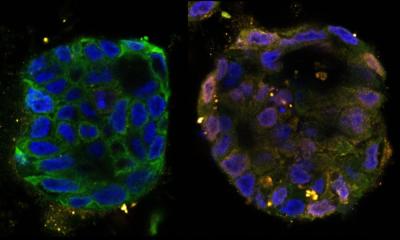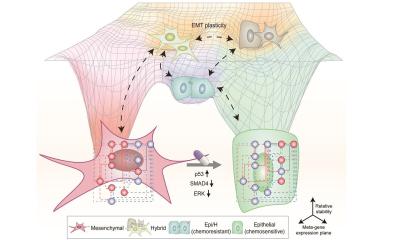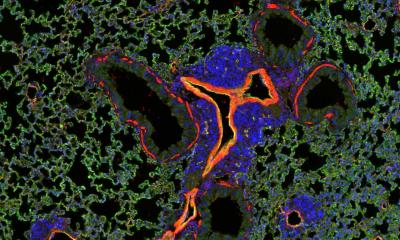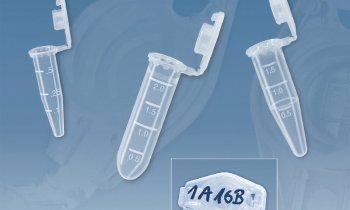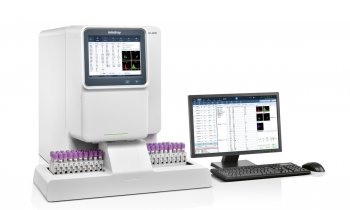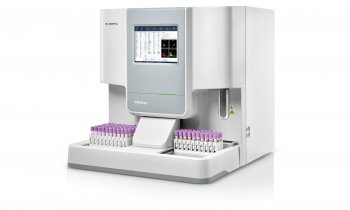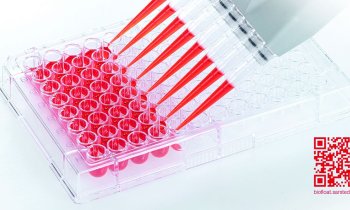News • Mitochondria-derived nuclear ATP surge
Pressed to the limit: New study explores cancer cell defense mechanism
Cancer cells mount an instant, energy‑rich response to being physically squeezed, according to a new study. The surge of energy is the first reported instance of a defensive mechanism which helps the cells repair DNA damage and survive the crowded environments of the human body.
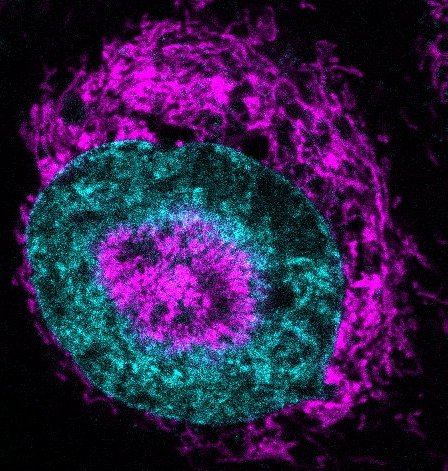
Image source: Centro de Regulación Genómica / Rito Ghose and Fabio Pezzano
The findings, published in the journal Nature Communications, help explain how cancer cells survive complex mechanical gauntlets like crawling through a tumour microenvironment, sliding into porous blood vessels or enduring the battering of the bloodstream. The discovery of the mechanism can lead to new strategies which pin cancer cells down before they spread.
Researchers at the Centre for Genomic Regulation (CRG) in Barcelona made the discovery using a specialised microscope that can compress living cells to just three microns wide, about one-thirtieth the diameter of a human hair. They observed that, that, within seconds of being squeezed, mitochondria in HeLA cells race to the surface of the nucleus and pump in extra ATP, the molecular energy source of cells.
“It forces us to rethink the role of mitochondria in the human body. They aren’t these static batteries powering our cells, but more like agile first responders that can be summoned in emergency situations when cells are literally pressed to the limit,” says Dr. Sara Sdelci, co-corresponding author of the study.
Recommended article
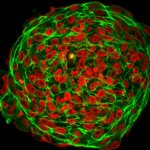
News • Physics of tumours
How cancer cells shape-shift to squeeze through tissue
Working with colleagues from Germany and the US, researchers at Leipzig University have achieved a breakthrough in research into how cancer cells spread. In experiments, the team of biophysicists led by Professor Josef Alfons Käs, Steffen Grosser and Jürgen Lippoldt demonstrated for the first time how cells deform in order to move in dense tumour tissues and squeeze past neighbouring cells. The…
The mitochondria formed a halo so tight that the nucleus dimpled inward. The phenomenon was observed in 84% of confined HeLa cancer cells, compared with virtually none in floating, uncompressed cells. The researchers refer to the structures “NAMs,” for nucleus-associated mitochondria.
To find out what NAMs did, the researchers deployed a fluorescent sensor that lights up when ATP enters the nucleus. The signal soared by around 60% within three seconds of the cells being squeezed. "It’s a clear sign the cells are adapting to the strain and rewiring their metabolism,” says Dr. Fabio Pezzano, co-first author of the study.
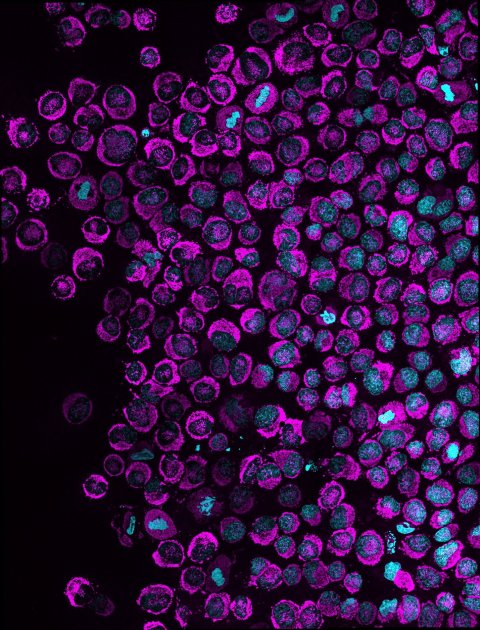
Image source: Centro de Regulación Genómica / Rito Ghose and Fabio Pezzano
Subsequent experiments revealed why the power surge matters. Mechanical squeezing puts DNA under stress, snapping strands and tangling the human genome. Cells rely on ATP-hungry repair crews to loosen DNA and reach broken sites to mend the damage. Squeezed cells that received the extra boost of ATP repaired DNA within hours, while those without stopped dividing properly.
To confirm relevance for disease, the researchers also examined breast‑tumour biopsies from 17 patients. The NAM halos appeared in 5.4% of nuclei at invasive tumour fronts versus 1.8% in the dense tumour core, a three‑fold difference. “Seeing this signature in patient biopsies convinced us of the relevance beyond the lab bench,” explains Dr. Ritobrata (Rito) Ghose, co-first author of the study.
The researchers were also able to study the cellular engineering which makes the mitochondrial rush possible. Actin filaments, the same protein cables that let muscles flex, compound around the nucleus, while the endoplasmic reticulum throws a mesh-like net. The combined scaffold, the study shows, physically traps the NAMs in place, forming the halo-like structure. When the researchers treated cells with latrunculin A, a drug that dismantles actin, NAM formation collapsed and the ATP tide receded.
If metastatic cells depend on NAM-driven ATP surges, drugs that block the scaffold could make tumours less invasive without broadly poisoning mitochondria and sparing healthy tissues. “Mechanical stress responses are an underexplored vulnerability of cancer cells that can open new therapeutic avenues,” says Dr. Verena Ruprecht, co-corresponding author of the study.
While the study looked at cancer cells, the authors of the study stress the phenomenon is likely a universal phenomenon in biology. Immune cells squeezing through lymph nodes, neurons extending branches, and embryonic cells during morphogenesis all experience similar physical forces.
“Wherever cells are under pressure, a nuclear energy boost is likely safeguarding the integrity of the genome,” concludes Dr. Sdelci. “It’s a completely new layer of regulation in cell biology, marking a fundamental shift in our understanding of how cells survive intense periods of physical stress.”
Source: Center for Genomic Regulation
30.07.2025



